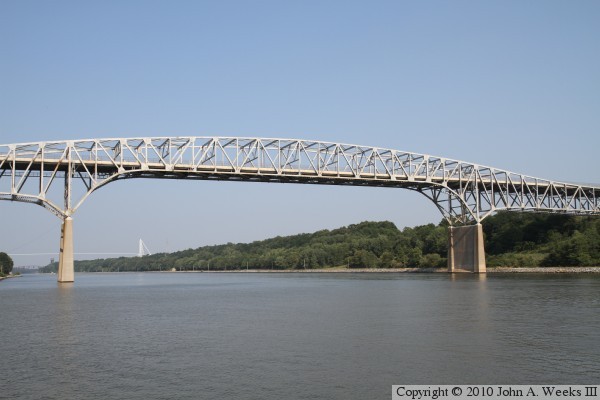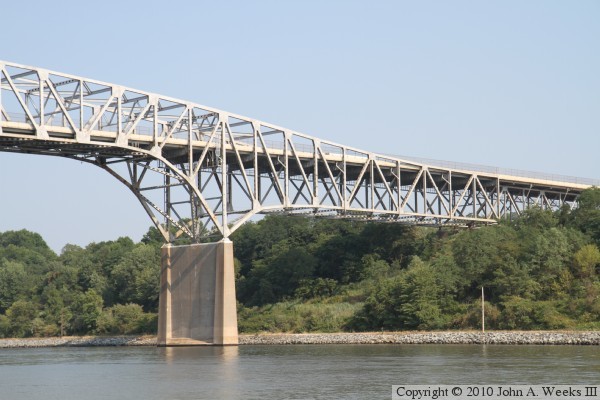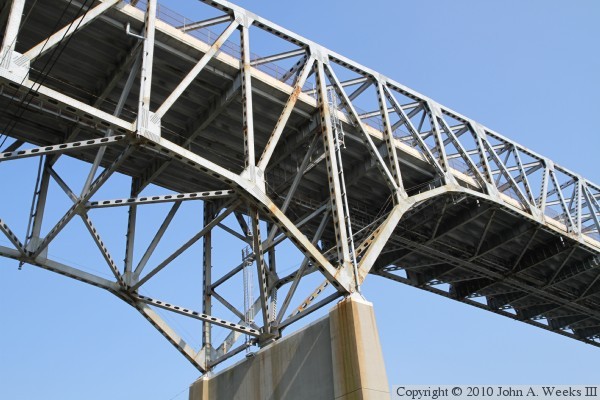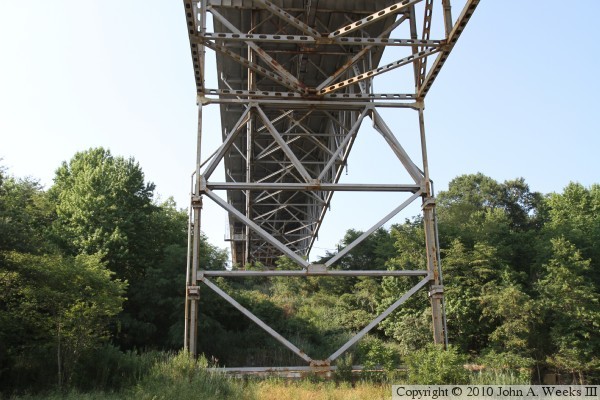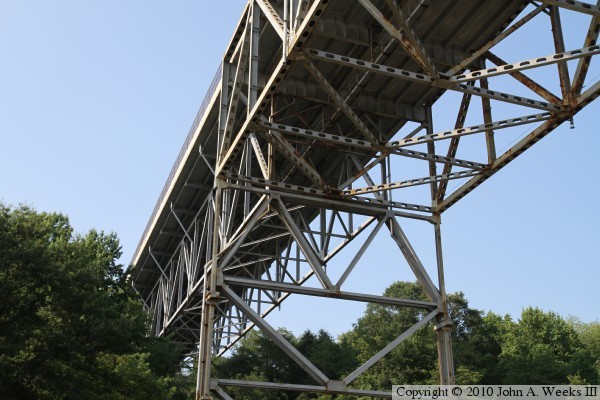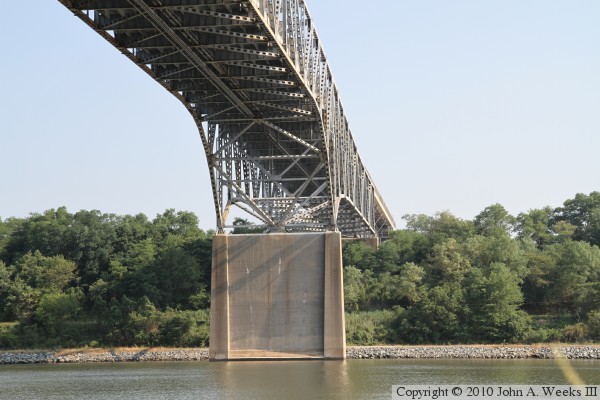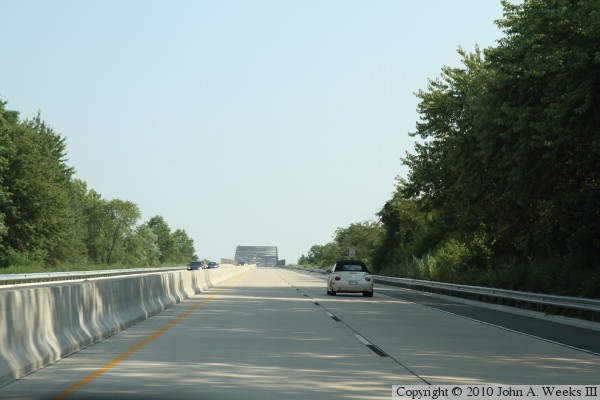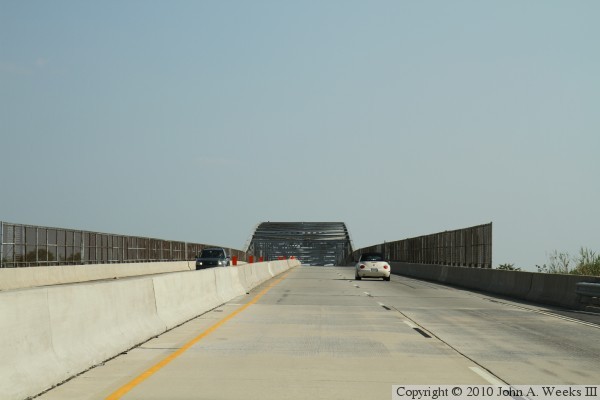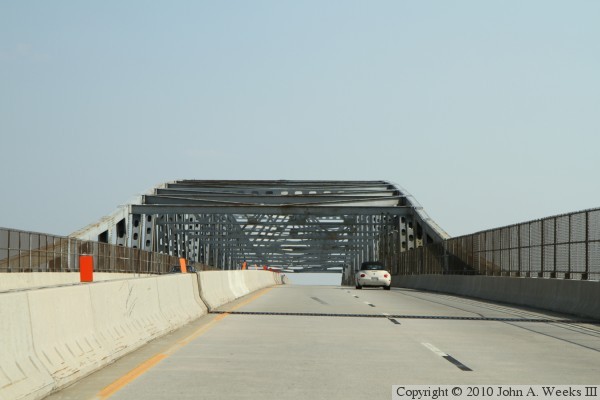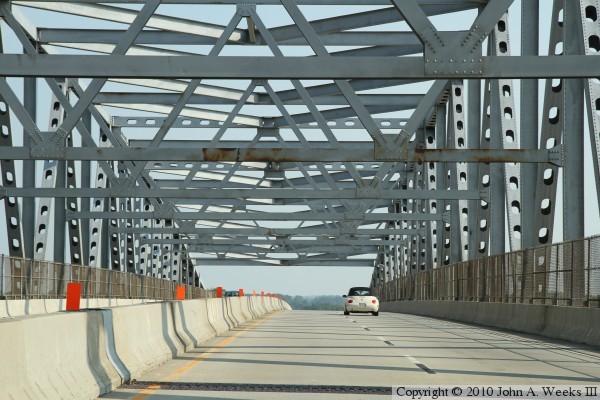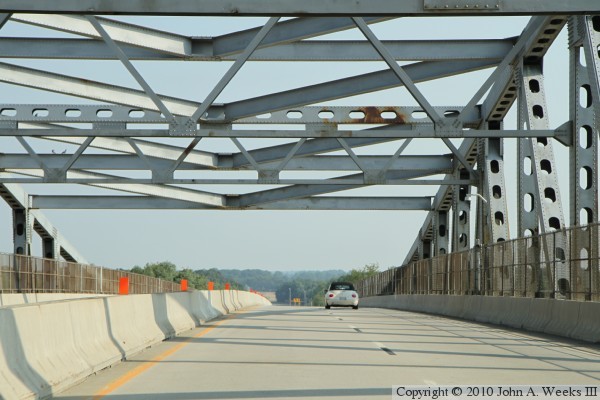At first glance, the Summit Bridge looks very similar to the Reedy Point Bridge. Both are about the same size, and both are cantilever style truss bridges. However, they have some significant differences. First, the Summit Bridge is located in an area where the land on either side of the canal is about 100 feet above sea level, resulting in the need for fewer approach spans. In fact, the Summit Bridge has only 6 approach spans, whereas the Reedy Point Bridge has 64 approach spans. Second, the Summit Bridge has only 4 main support piers, whereas the Reedy Point Bridge has 6 main bridge piers.
The original Summit Bridge was located about 3/4 of a mile to the east. It was a wooden covered bridge. It was 250 feet long and stood 90 feet above the canal channel. This bridge was removed when the canal was expanded in the 1920s. The replacement bridge was a steel lift bridge. That bridge was repeatedly struck by ships. It was finally retired in the early 1960s when the canal was widened to 450 feet. The current Summit Bridge was built by the US Army Corps of Engineers to cross the new wider canal channel in 1960.
Update—the US Army Corps of Engineers managed a maintenance and repair project on the Summit Bridge starting in April, 2011, and will run through December, 2012. The project featured lane closings through much of 2011 and the summer of 2012 that are projected to end on August 20, 2012. The bridge was fully closed from December 2, 2011 to December 5, 2011, and again May 11, 2012, through May 14, 2012. The project includes removing lead paint, repainting the structure, and replacing expansion joints.
The photo above is a view of the bridge truss structure looking east from a fishing pier on the north bank of the C&D Canal. The Eastern Shore Pipeline Bridge is visible in the distance, as well as the Conrail Lift Bridge being just barely visible in the distance. The photo below is a closer view of the main channel span as seen from the end of the fishing pier that is visible in the photo above.


